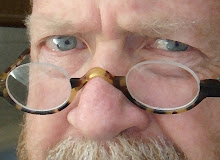Bright and early on the morning of January 1st, 2009, as has become my custom for the past handful of years, I went into the Little Big Trees bonsai plantation and took dormant hardwood cuttings from my dawn redwoods, Chinese elms, gingkoes and hornbeams. I trimmed the best of the terminal and secondary cuttings into 4” – 6” lengths, labeled them, placed them in zip-lock bags, and set them in the refrigerator for the remainder of the winter. In late March, I will soak them in IBA rooting hormone, plant them enmasse in wooden planter boxes and let nature take its course. If past years are any indication, I will end the summer with at least another 10-12 dozen trees.
Even though I was told years ago that working with cuttings rather than seeds is a waste of time, there is just something magically satisfying about a disarticulated cutting. This plant-fragment awakens with an immediate disadvantage: it has been sliced open and exposed to invading disease, it has no easy source of rising sap, no roots in place to sample the sweet snow-melt waters of early spring. There is a moment when the cutting realizes this and freezes in horror like a soldier returned from war who awakens to discover that a limb has been amputated.
The cutting has no time for self-pity. It has a decision to make. It is root or rot. The cutting must move quickly to seal off the injured tissue and throw out new roots. To do anything less is to allow the integrity of the exposed tissue to be compromised and to succumb to rot and desiccation. It was described to me once in vivid terms: There is a moment when the cutting screams out “I live!”
All of the trees that I raise from cuttings have survived that moment and have made that decision. They don’t live through some miracle of genetics or accident of biology. They have each made the decision to live. They WANT to live. They live.
I believe that this imbues them with a special character that seeded plants may lack.
Sunday, January 4, 2009
Subscribe to:
Posts (Atom)
